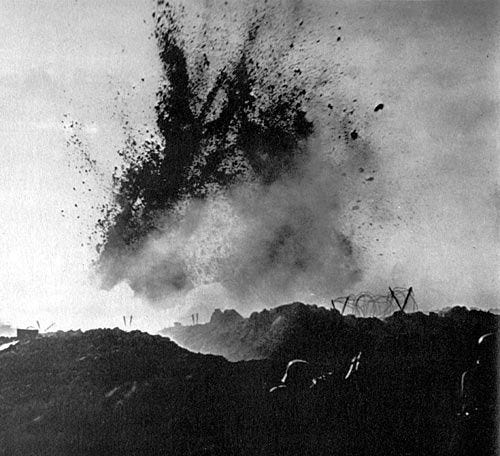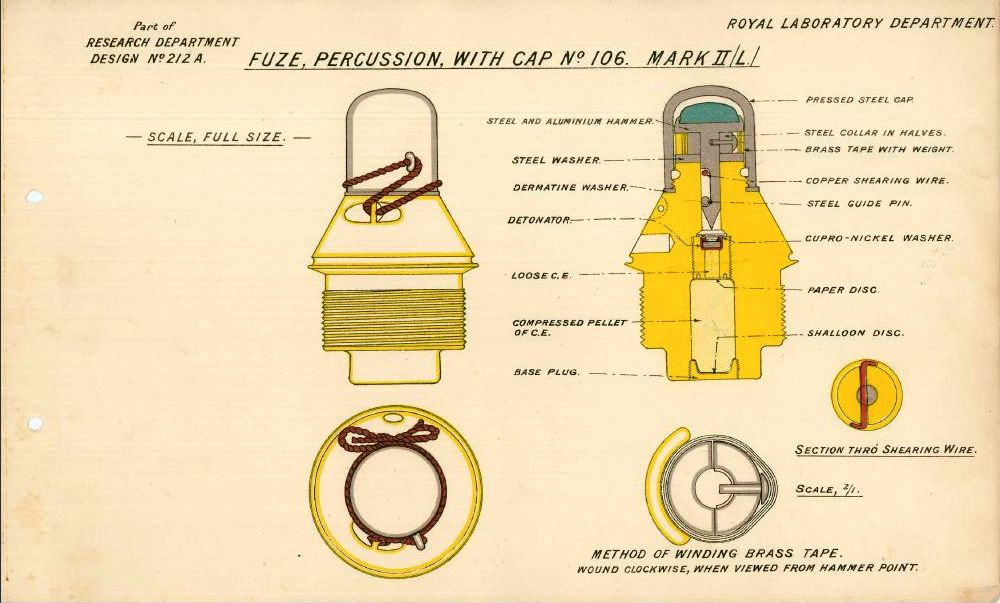Iron Indignation Book Excerpt: Artillery Fuses
"The fuse therefore, is the soul, the groundwork of any system of explosive projectile.”
In its earliest and most basic form, that of a cannon ball, artillery shells were solid and were designed to smash into fortress walls or enemy personnel and use sheer kinetic energy to do their work. Early shells included arrows and, in medieval times, even biological weapons such as diseased animal carcasses, which were lobbed over city walls by catapult. As time passed and the science of artillery evolved, visionary practitioners of fire support realized that the shell could be modified, filled with explosive, and thus do something other than simply smash into the target when it neared the enemy. Consequently, the fuse became a critical element of the artillery projectile. As Belgian army Captain Charles Borman, inventor of the Bormann time fuse, which revolutionized the employment of shrapnel shells, wrote in 1862, “The fuse therefore, is the soul, the groundwork of any system of explosive projectile [emphasis added].” The eruption of the Great War led to a concomitant eruption of fuses as the scientific and technical effectiveness of the artillery was improved throughout the conflict. In fact, more types of artillery fuses were developed during the four years of the First World War than had been developed in the fifty years leading up to it.
There were three classifications of fuses in use in the British Artillery during the First War: percussion fuses, time fuses, and a combination time and percussion fuse. Percussion fuses were designed to operate once they struck an object, and had several sub-classifications of fuses. Direct action fuses required a heavy blow to the head, or nose, of the fuse at the leading edge of the projectile to cause it to function. Inside the fuse was a copper disk fitted to the very nose of the fuse, and attached to it, facing away from the nose of the fuse, was a steel needle. When the shell struck something, the nose of the fuse would collapse, pushing the steel needle onto a detonator, causing the fuse to function and explode the shell. Direct action impact fuses were similar, but were constructed in such a manner as to require a harder blow for the nose of the fuse to collapse and explode the shell. Graze fuses, however, were very sensitive. Inside the fuse was a small free-floating pellet carrying a detonator. This pellet would be pushed rearward in the fuse due to the shock of firing, but when the fuse grazed something, the shell would slow and the inertia of the pellet and detonator would carry it forward, striking an igniter that caused the detonator to explode the shell. Finally, the direct-action delay fuse was designed to function like the direct action fuse, but instead of the steel needle being forced back onto a detonator that would cause the shell to explode, it lit a column of burning composition, not unlike gunpowder, in a small tube. This powder would burn from the igniting end to the bottom of the tube, which would take a fraction of a second, and then ignite the detonator that would explode the shell. This imparted a slight delay on the shell functioning, allowing it to penetrate ground, earthworks, or wire before functioning.
The percussion fuses in use by the British and Canadian artilleries during the First World War underwent a significant evolution and improvement during the war. Initially, the 101 fuse was employed, but it was found to be unreliable. This was especially the case when it came to using artillery to destroy wire entanglements, as the 101 was not caused to detonate by the wire, but rather by the ground underneath. The resulting delayed explosion of the projectile was normally insufficient to actually cut the wire. This lamentable state of affairs remained in place until the introduction of a much more effective fuse in the spring of 1917.
Known as the No. 106 fuse, it was a marked improvement over its predecessor and was much quicker to detonate. Prior to the introduction of the 106 fuse, artillery percussion fuses still had a slight delay before functioning, and often the striking of barbed wire would be insufficient to cause the fuse to function. As a result, the shell would bury itself into the ground before exploding, causing much of the fragmentation and concussive blast to be absorbed by the ground and leaving the barbed wire intact. The 106 fuse was much more sensitive – striking barbed wire did cause it to function – so the explosion was also far more instantaneous than that of its predecessors. Consequently, the shell of the 106 fuse exploded earlier, without burying itself too deeply into the ground, resulting in more of the concussive blast and fragmentation propagating into the surrounding area rather than being absorbed by the ground. As more fragmentation was expelled into the air by the shell, the efficacy of the round to cut barbed wire and provide anti-personnel effects increased exponentially.
The tactical improvement wrought by the development of the No. 106 fuse warranted special mention in the final dispatch of Field-Marshal Haig. In 1918 he wrote:
The invention of a new fuse known as “106,” which was first used in the battle of Arras, 1917, enabled wire entanglements to be easily and quickly destroyed and so modified our methods of attacking organized positions. By bursting the shell the instant it touched the ground and before it had become buried, the destructive effect of the explosion was greatly increased. It became possible to cut wire with a far less expenditure of time and ammunition, and the factor of surprise was given a larger part in operations.
Another benefit of the 106 fuse seems to have been the moral effect of its explosion, which was much louder than that of its predecessors. It was recorded in the 60th Canadian Field Artillery Battery Book that “the new instantaneous fuse No. 106 was fitted to the H.E. This latter combination formed a shell which was unrivalled in its offensive power; the rending crash of a well-burst ‘106’ has a demoralizing effect which must be felt to be appreciated, as all know who have been near the [mean point of impact] of a battery when it is shooting short.”
While instantaneous percussion fuses were an important part of the artillery arsenal, it was equally important to be able to burst shells in the air, a feat accomplished during the First World War by the use of a time fuse. As its name implies, a time fuse is a fuse that can be set to burst a shell at a pre-determined time after firing, making it possible for the shell to function in the air, prior to impact. The fuse accomplishes this through the use of a “bursting charge” ignited by a chemical burning in the fuse. The fuse contains an amount of this chemical composition, and setting the fuse would determine at what point along the burn chain the ignition would start, thereby determining the length of time between the firing of the gun and the functioning of the fuse, which caused the payload of the projectile to function, ideally in the air above the target.[iv] As with the naturally occurring errors that produce an elongated beaten zone in the fall of shot, the time fuse also has a certain naturally occurring “zone” in which it may function. All that is to say, one hundred projectiles could be fired with the same time fuse setting, and no two rounds would burst at exactly the same height. Fortunately for the imperial artilleries, the British were able to increase the reliability of their time fuses, and one of the great technological benefits that the imperial artilleries had over their German opponents was an ability to detonate shrapnel shells at an effective height.







